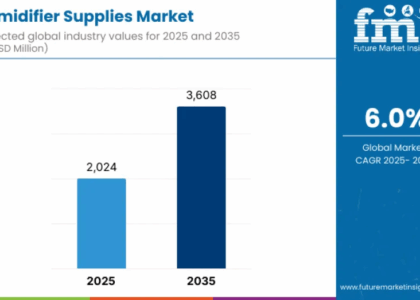The global sales of Small Molecule API are estimated to be worth USD 120.4 billion in 2024 and are anticipated to reach a value of USD 186.9 billion by 2034. Sales are projected to rise at a CAGR of 4.5% over the forecast period between 2024 and 2034. The revenue generated by Small Molecule API in 2023 was USD 114,517.3 million. The industry is anticipated to exhibit a Y-o-Y growth of 4.6% in 2024.
The small molecule API market plays a crucial role in the global pharmaceutical landscape. These active pharmaceutical ingredients (APIs) are essential for the formulation of numerous drugs that treat a wide range of medical conditions. Small molecule APIs are chemically synthesized compounds characterized by their low molecular weight, enabling them to easily enter cells and interact with specific intracellular targets. Their ability to be administered orally and their cost-effectiveness compared to biologics have made them a staple in modern medicine.
As healthcare systems around the world aim to improve accessibility and reduce costs, small molecule APIs remain at the forefront of drug development and production. Their versatility and proven effectiveness continue to fuel research and innovation, solidifying their place in therapeutic strategies across therapeutic areas such as oncology, cardiology, neurology, and infectious diseases.
Get Sample Report: – https://www.futuremarketinsights.com/reports/sample/rep-gb-4591
Market Trends
The small molecule API market has been witnessing significant transformation driven by technological advancements and evolving pharmaceutical needs. One key trend is the growing emphasis on high-potency APIs (HPAPIs), which require specialized manufacturing facilities due to their high pharmacological activity at low doses. These APIs are increasingly being used in targeted therapies, especially in cancer treatment.
Another prominent trend is the rising demand for outsourcing API production. Many pharmaceutical companies are opting to outsource manufacturing to contract development and manufacturing organizations (CDMOs) to streamline costs, maintain flexibility, and access cutting-edge technologies. Additionally, there is a growing shift toward the development of generic drugs, particularly as patents for blockbuster drugs expire. This trend is expected to increase the demand for cost-efficient small molecule APIs globally.
Green chemistry practices are also gaining traction within the industry. Manufacturers are increasingly adopting sustainable synthesis processes to reduce environmental impact. This trend not only aligns with global environmental goals but also enhances compliance with stringent regulatory requirements in key markets like the U.S. and Europe.
Driving Forces Behind Market Growth
Several factors are propelling the growth of the small molecule API market. The rising global burden of chronic diseases is a primary driver, with increasing cases of cancer, diabetes, cardiovascular diseases, and respiratory illnesses requiring long-term pharmaceutical treatments. Small molecule APIs, due to their affordability and established efficacy, continue to serve as the backbone for medications targeting these conditions.
Aging populations in developed regions such as North America and Europe further contribute to market expansion. As older demographics require more medication, the demand for drugs containing small molecule APIs rises correspondingly. Additionally, emerging economies in Asia-Pacific, Latin America, and Africa are witnessing improved healthcare infrastructure and growing healthcare expenditure, leading to an uptick in pharmaceutical consumption and consequently, a surge in small molecule API demand.
The acceleration of research and development (R&D) activities in the pharmaceutical sector is another strong growth factor. Pharmaceutical firms are heavily investing in innovative drug pipelines, many of which include small molecule candidates. Regulatory approvals for new small molecule drugs have also seen an upward trend, boosting overall market confidence.
Challenges and Opportunities
Despite its strong trajectory, the small molecule API market faces several challenges. Regulatory hurdles remain a significant barrier, especially as global agencies like the U.S. FDA and EMA enforce stringent quality standards. Navigating complex regulatory landscapes can delay product launches and increase compliance costs, particularly for smaller firms.
Supply chain disruptions also pose risks to the market. Events such as the COVID-19 pandemic exposed the vulnerabilities of globally interconnected supply chains. This has led to a renewed focus on localizing API production and reducing dependence on single-source suppliers, particularly from countries like China and India.
On the flip side, these challenges also bring opportunities. There is a rising demand for resilient and diversified supply chains, giving room for new players to enter the market with competitive advantages. Furthermore, advances in synthetic chemistry, continuous manufacturing, and artificial intelligence in drug discovery present exciting prospects for increasing efficiency and reducing development timelines.
Another major opportunity lies in the growing interest in precision medicine. Small molecule APIs are being tailored to target specific genetic markers, paving the way for more effective and personalized treatments. This trend not only enhances therapeutic outcomes but also opens new revenue streams for API manufacturers.
Recent Industry Developments
- The small molecule API market has seen numerous developments in recent years that reflect its dynamic nature. Several CDMOs have expanded their production capacities to meet growing client demands, particularly in high-potency API segments. Companies have also been forming strategic alliances and entering joint ventures to leverage complementary strengths and enhance global footprints.
- There has been a noticeable increase in investments directed toward upgrading manufacturing facilities to comply with evolving regulatory standards and incorporate environmentally friendly practices. Additionally, a wave of mergers and acquisitions is reshaping the competitive landscape. These transactions aim to consolidate expertise, expand product portfolios, and penetrate new regional markets.
- Digital transformation is also making waves in the small molecule API market. Automation, real-time data analytics, and predictive modeling are being utilized to improve quality control, optimize production, and accelerate timelines from discovery to commercialization.
Regional Analysis
The small molecule API market exhibits diverse dynamics across various regions. North America holds a significant market share, driven by its well-established pharmaceutical sector, robust R&D infrastructure, and presence of leading API manufacturers. The U.S. in particular remains a key contributor due to its focus on innovative drug development and a strong regulatory framework that supports growth.
Europe follows closely, with countries such as Germany, France, and the UK serving as major hubs for API manufacturing. The region’s commitment to sustainable practices and regulatory excellence ensures high standards in API production. However, it also presents challenges in the form of complex compliance procedures that can slow market entry.
Asia-Pacific represents the fastest-growing region in the small molecule API market. The presence of cost-efficient manufacturing environments, particularly in India and China, makes the region a preferred outsourcing destination. Rising healthcare awareness, expanding health insurance coverage, and increasing chronic disease prevalence further amplify demand for pharmaceutical products in the region.
Latin America and the Middle East & Africa are emerging as new growth frontiers. Though still developing in terms of infrastructure and regulatory maturity, these regions offer substantial opportunities due to increasing healthcare investments and population growth.
Competitive Outlook
The competitive landscape of the small molecule API market is characterized by the presence of both large multinational corporations and specialized niche players. Companies compete on parameters such as pricing, product quality, regulatory compliance, and technological innovation. While established firms have the advantage of scale and experience, smaller players often bring agility and specialized capabilities to the table.
The market is becoming increasingly consolidated, with key players seeking to expand their reach and capabilities through acquisitions and partnerships. Contract manufacturing is gaining prominence, prompting traditional pharma companies to forge strategic ties with CDMOs to meet growing demand without investing heavily in new infrastructure.
Innovation remains a core competitive differentiator. Companies that can incorporate advanced technologies such as continuous manufacturing, process optimization, and digital monitoring are better positioned to lead in terms of cost-efficiency and product quality.
Top Companies
Several companies have carved out leadership positions in the small molecule API market. These include Pfizer Inc., Teva Pharmaceutical Industries Ltd., Novartis AG, Sanofi S.A., and Merck & Co., Inc. These firms benefit from extensive global networks, strong product pipelines, and significant investments in R&D.
Other notable players include Dr. Reddy’s Laboratories, Sun Pharmaceutical Industries Ltd., and Aurobindo Pharma. These companies have gained prominence for their cost-effective manufacturing and strategic focus on both domestic and international markets. Additionally, specialized firms like Cambrex Corporation, Lonza Group, and Catalent, Inc. are influential in the contract manufacturing space, offering end-to-end solutions for small molecule API production.
Explore In-Depth Analysis-Click Here to Access the Report:- https://www.futuremarketinsights.com/reports/small-molecule-api-market
Segmentation Outlook
The small molecule API market can be segmented based on type, therapeutic area, manufacturer type, and region. In terms of type, the market is divided into synthetic chemical APIs and biological APIs, with synthetic APIs holding a larger share due to widespread usage in generic drugs. By therapeutic area, oncology, cardiovascular diseases, and infectious diseases dominate, reflecting the high prevalence and treatment needs of these conditions.
Based on manufacturer type, the market is segmented into captive and merchant manufacturers. Captive manufacturers produce APIs for in-house use, while merchant manufacturers supply APIs to external customers, a segment that has seen significant growth due to outsourcing trends.
Regional segmentation further highlights market dynamics across North America, Europe, Asia-Pacific, Latin America, and the Middle East & Africa, each contributing uniquely to overall growth. Understanding these segmentation layers is critical for stakeholders aiming to tap into the diverse opportunities offered by the global small molecule API market.
About Future Market Insights (FMI)
Future Market Insights, Inc. (ESOMAR certified, recipient of the Stevie Award, and a member of the Greater New York Chamber of Commerce) offers profound insights into the driving factors that are boosting demand in the market. FMI stands as the leading global provider of market intelligence, advisory services, consulting, and events for the Packaging, Food and Beverage, Consumer Technology, Healthcare, Industrial, and Chemicals markets. With a vast team of over 400 analysts worldwide, FMI provides global, regional, and local expertise on diverse domains and industry trends across more than 110 countries.
Contact Us:
Future Market Insights Inc.
Christiana Corporate, 200 Continental Drive,
Suite 401, Newark, Delaware – 19713, USA
T: +1-347-918-3531
For Sales Enquiries: sales@futuremarketinsights.com
Website: https://www.futuremarketinsights.com
LinkedIn| Twitter| Blogs | YouTube





